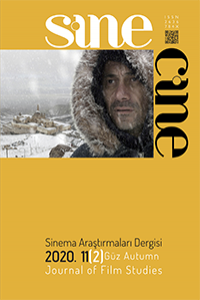1960 YILINDAN GÜNÜMÜZE ANİMASYON FİLMLERDE MİMARLIK, KENT VE MEKÂN: GELECEK GÖRÜNDÜ
2022
Dergi:
sinecine: Sinema Araştırmaları Dergisi
Özet:
Ever since the first manmade object entered space in the 1950s, the human imagination has been captivated by the future. Nowhere is this clearer than in cinema, whose representations of the future are forced to reckon with the topic of design, especially as related to the city, urban space (fictional space), interiors, and, naturally, architecture. Since both cinema and architecture involve a focus on notions of human experience, movement, time, and visuality, the two fields are intimately related. This relationship is the starting point for this article, which uses the lens of fictional space to analyze the interaction between architecture and cinema during the First Space Age (1957–91) and the Second Space Age (1991–present), including the social, cultural, and theoretical aspects of that relationship, with a particular focus on representations of interior space and urban design. To analyze this interaction, we employ a qualitative research methodology and a historiographical lens that emphasizes the evolutionary process of the representation of the future in architecture and cinema. Because only the imagination limits human fictional space and the technology, materials, and spatial qualities within it, we draw the particular cases we examine in this article from animated series and films (The Jetsons Astro Boy Transformers: The Movie My Life as a Teenage Robot Love, Death & Robots and WALL-E), which we select and analyze through stratified random sampling. These particular cases were chosen with an eye to their representation of the First and Second Space Age and their ability to provide grounds for comparison within and between the two eras. Additionally, the fact that few of these have yet been addressed by researchers makes their analysis here another of this study’s contributions to the scholarly literature. Because fictional space in cinema, its reflection in architecture, urban space, and interior design, and representation are critical themes for this article, we employ Stuart Hall’s representation theory and underline the benefits of his constructivist representation approach. The animated series and films dealt with here offer diverse perspectives on the topic. We examine the sorts of representations of the future they employ, while also dividing them by period to ascertain differences between these representations in the First and Second Space Age. By comparing the cases under study, we identify different urban and architectural approaches unique to each period that reflect its social and cultural context, theoretical horizons, and consumption habits. In doing so, we reveal that each period has its own representational language, with the First Space Age marked by an emphasis on physical space and equipment that is replaced in the Second Space Age by an emphasis on changes in social life. The examples that reflect the First Space Age emphasize futuristic, space-themed details in interior design, while those reflecting the Second Space Age content themselves with today’s technology and current materials and represent the theme of the future instead mostly through façade organizations and urban patterns. Furthermore, the samples reflecting the Second Space Age introduce a new type of future in which humans are positioned as passive and technology, technological devices, and equipment are positioned as active. Cases from this later era reckon more deeply with the role of the technology that is ostensibly meant to serve humans, eschewing the earlier emphasis on design variety, specifically interior design, in favor of grappling with and developing a perspective on the theme of the future. These differences are a reflection of the different social, cultural, and economic conditions and background of the First Space Age and Second Space Age, revealing the reciprocal interaction of the historical conditions and the particular approaches of cinema and architecture. Cinema is influenced by the social, cultural, and architectural features of its era. And, as a powerful mass media tool with the power to spread trends and developments across the world, it also has an important impact on its era. Therefore, cinema, architecture, and the facts of social life nourish one another and, as a result, evolve together.
Anahtar Kelimeler:

